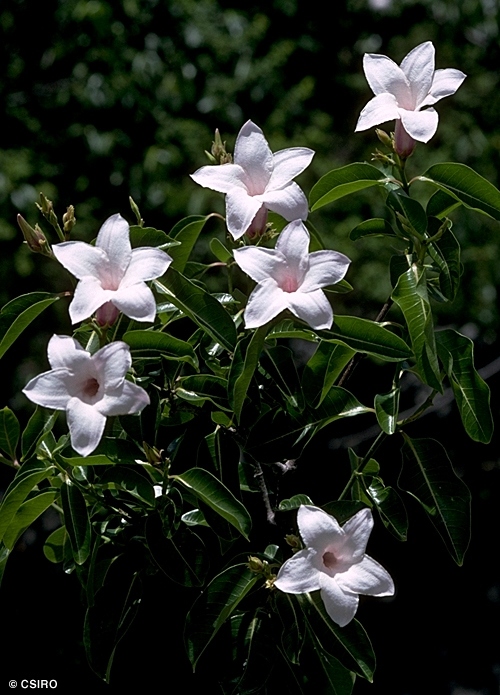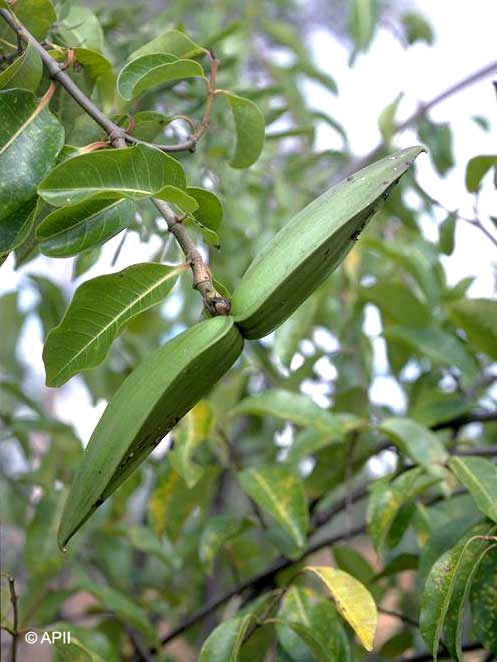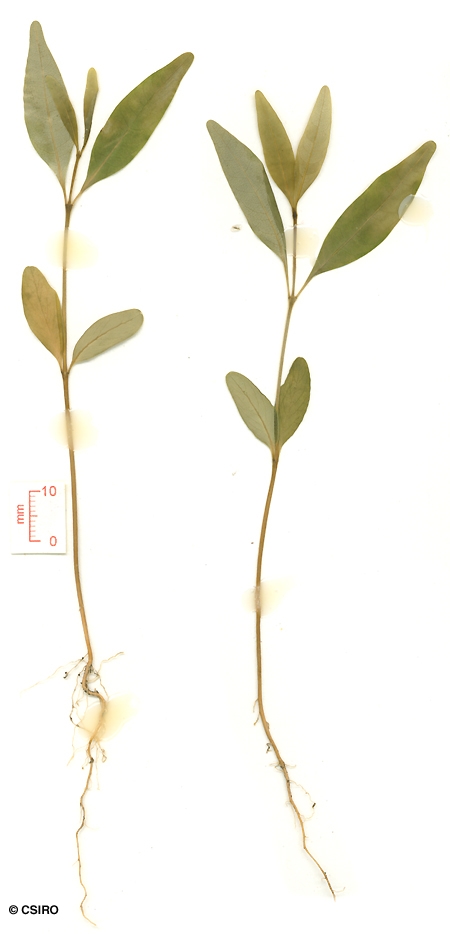Australian Tropical Rainforest Plants - Online edition
Cryptostegia grandiflora R.Br.






Brown, R. (1820) Edwards's Botanical Register 5 : t. 43. Type: Bot. Reg. 5: t. 435 (1820). Lecto. fide J. Marohasy & P. I. Forster, Austral. Sys. Bot. 4: 574 (1991).
Rubber Vine; Palay Rubber-vine; Indian Rubber-vine; Vine, Rubber; Rubber-plant
Twigs and stems marked by prominent pale-coloured lenticels. Petioles and twigs produce a milky exudate. Leaf blades of moderate size, about 5-7 x 2.5-3 cm. Lateral veins curved throughout their length but not forming distinct loops. Reticulate veins quite distinct, forming a definite net. A number of peg-like glands visible in the leaf axils.
Flowers about 50 mm diam. Calyx producing a milky exudate. Each calyx lobe with two or three small triangular glands on the inner (adaxial) surface. Corolla glabrous, +/- white on the inside but mainly mauve or purple outside. Pollen pale brown, granular, +/- aggregated in pollinia. Carpels +/- free at the apex but joined towards the base.
Fruits large, each fruiting carpel +/- 3-winged, carpels about 12-14 x 3-4.5 cm, usually paired, divaricate, attached by their bases. Seeds immersed in fine silky hairs which are loosely attached as a clump to one end of the seed. Hairs about 10-15 mm long. Testa +/- textured on the outer surface.
Cotyledons about 20-26 x 8-10 mm, midrib purplish on the underside. Petioles and stems produce a milky exudate. At the tenth leaf stage: leaf blades linear or narrowly elliptic, apex gradually narrowing into a short rounded apex, base attenuate. All parts of the seedling produce a milky exudate. Stipules small and inconspicuous. Seed germination time 7 to 9 days.
An introduced weed originally from Madagascar now naturalised in parts of northern Australia. Occurs in WA, NT, NEQ, CEQ and southwards as far as south eastern. Altitudinal range from near sea level to 400 m. In NEQ it reaches its best development along the rivers flowing into the Gulf of Carpentaria but it can thrive in situations well removed from watercourses and is a major weed of grazing lands in open forest. It is a rampant weed in monsoon forests. The long term consequences of its invasion are painful to contemplate. Along the gulf rivers it provides a refuge for wild pigs and during floods causes immense damage to riparian trees which are either broken off or torn out when this species acts like a gigantic drag net or dam upon which debris accumulates until the force of the flood waters exceeds the breaking strain of the vegetation.
A poisonous plant causing death in cattle, sheep, goats and horses. Unpalatable and rarely eaten. Everist (1974).
All plant parts poisonous. Austin, D. F. 1998. Poisonous Plants of Southern Florida.





